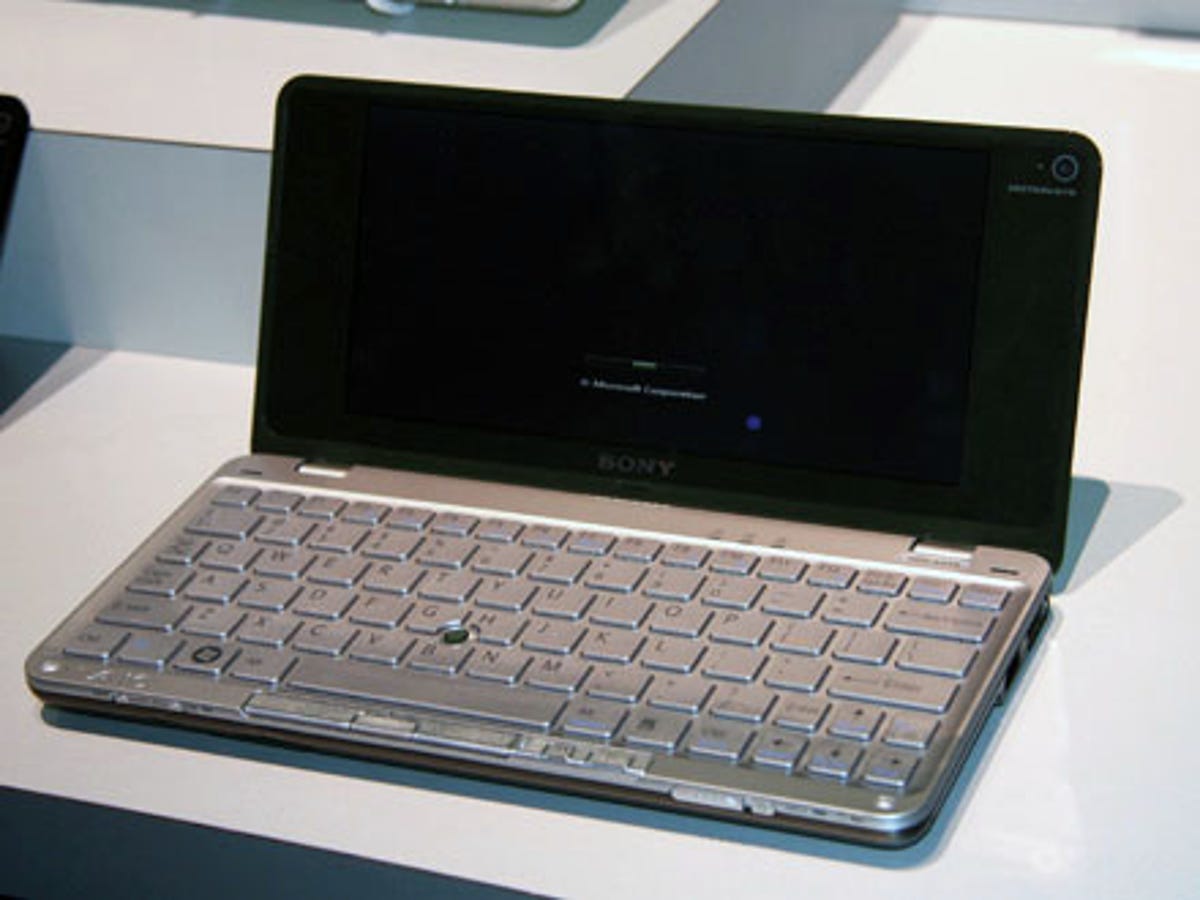
Sony has finally taken the wraps off its first netbook at this year's CES show at Las Vegas, and we had a brief hands-on with it. Is it a stylish Eee PC killer or an overpriced, under-performing PDA?
Ty Pendlebury is attending CES 2009 as a guest of LG.
One of the first things that struck us when using the P-series is that the SSD model uses Vista Home Premium, which is a bold move for a 1.3GHz Atom machine. At least it has a goodly amount of RAM — 2GB — enabling it to run Microsoft's resource hog with some semblance of urgency. In our brief use we didn't notice any slowdowns, and the operating system loaded in a reasonable time.
The netbook is very light at only 620 grams with a hard drive or 594 grams with an SSD on-board, and its compact 279x200x24mm dimensions make it small enough to fit in a pocket or even a small manbag.
The keyboard had a decent feel for a device of this size, but we weren't as convinced by the mousing "nipple" and edge-mounted mousing buttons — it brought back memories of the poor mouse on the Microsoft Remote Keyboard for Media Center.
Unfortunately, the local model lacks the 3G or GPS of the US model, but retains the noise-cancelling headphones (only on the VGN-P15G), built-in 802.11n wireless and Bluetooth. The P-series has an LED-backlit 8-inch display, which features a native resolution of 1600x768. For some reason, the device also includes Sony's Xross Media Bar via a Media button, and also includes a built-in webcam. Available colours are Garnet Red, Olivine Green, Obsidian Black and Crystal White.
The device is pretty expensive though, with the cheaper VGN-P13GH with 60GB HDD setting you back AU$1,599 while the VGN-P15G 64GB SSD model costs a staggering AU$2,299. On price alone, a competitor to the Eee PC this is not, but the P-series certainly looks pretty. We look forward to testing the device more fully in our labs. The two models will be available from mid-February.

